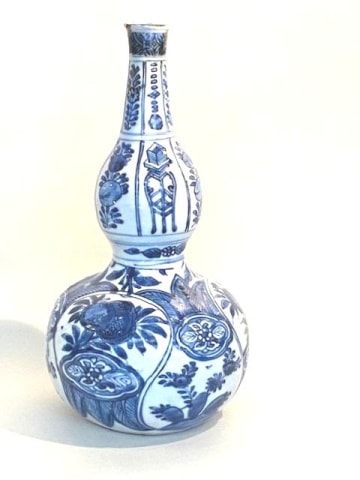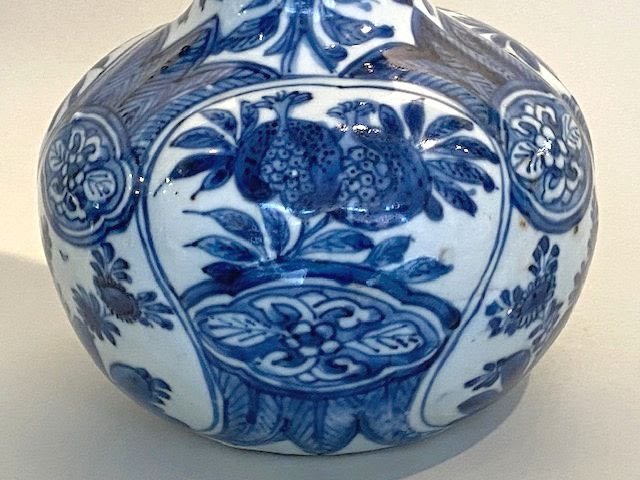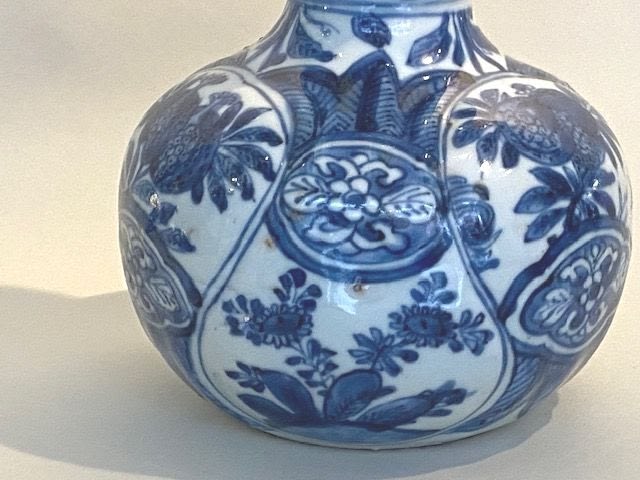A CHINESE BLUE AND WHITE DOUBLE GOURD VASE, Wanli (1572 – 1620)
Height: 25.5cm; 10 ins.
BJ07
BJ07
Further images
Formed in two bulbous sections, decorated in various shades of underglaze blue, the compressed globular lower section painted with slightly raised tessellating pomegranate shaped panels, each enclosing blossoming and fruiting...
Formed in two bulbous sections, decorated in various shades of underglaze blue, the compressed globular lower section painted with slightly raised tessellating pomegranate shaped panels, each enclosing blossoming and fruiting peach stems and a quatrefoil cartouche, with plantain leaves in a petal formation, the pear-shaped upper section decorated with six vertical panels, enclosing further peaches and a censer on a table below further smaller panels of pendant diaper and upright flowering branches, a diaper pattern around the rim, the base glazed.
Provenance
The collection of Dinah Reynolds, author of Worcester Porcelain 1751-1783, published 1989.Literature
See Krahl, Regina. Chinese Ceramics in the Topkapı Saray Museum Istanbul, II Yuan and Ming Dynasty Porcelains.1986. see pl. 1393, p.754 for an extremely similar example where Krahl gives a dating late 16th centuryfor another example of the same form see the Victoria and Albert Museum, No. C.1869-1921.
In Kraak Porcelain: A Moment in the History of Trade (1989), Maura Rinaldi classifies Kraak double gourd vases (Shape 1.2, pp.172-3, pl.216-218). The present double gourd vase most closely resembles the larger vase in pl.216, which is of the same form and similar decoration of interlinking pomegranate panels, dated by Rinaldi c.1590-1610.
Rinaldi also notes that Kraak double gourd vases are rare in Western collections.






